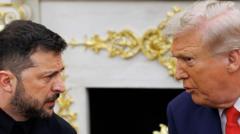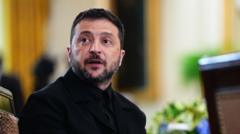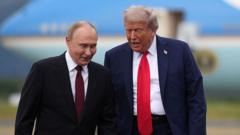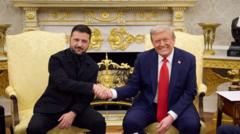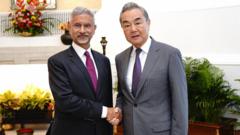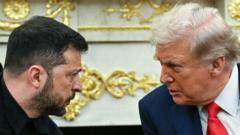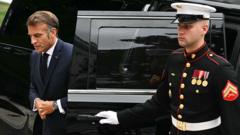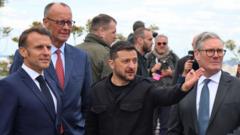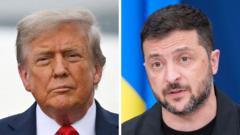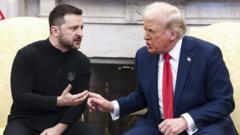Amidst recent tariff fluctuations by the Trump administration, Treasury Secretary Scott Bessent emerges as a pivotal figure, counterbalancing more hardline voices like Howard Lutnick and Peter Navarro, as market reactions result in a reshaping of U.S. trade strategies.
The Power Dynamics of Trump's Tariff Announcement: Understanding the Key Players

The Power Dynamics of Trump's Tariff Announcement: Understanding the Key Players
Analyzing the roles of Scott Bessent, Howard Lutnick, and Peter Navarro in shaping the recent tariff policies under Trump.
In the wake of President Donald Trump’s unexpected pause on numerous reciprocal tariffs, the intricate power dynamics among his economic advisors came into sharp focus. Treasury Secretary Scott Bessent swiftly became the spokesperson for this significant policy shift, revealing his approach as a more moderate, conciliatory voice in contrast to the assertive stances taken by fellow officials like Commerce Secretary Howard Lutnick and trade advisor Peter Navarro. Bessent conveyed during a press briefing that his recommendation for a pause was a courageous step, crediting his ability to gauge business sentiment effectively as a driving force in Trump’s decision-making process.
The immediate aftermath of the announcement resulted in a substantial upswing in the stock market, highlighting just how critical this shift in tariff strategy was viewed by market actors. While Bessent championed caution and negotiation, Lutnick and Navarro have been known for their hawkish positions on trade, often advocating for more aggressive tariffs, particularly against China.
Observations from trade policy veterans have pointed out that the contrasting approaches within Trump's cabinet have contributed to confusion and volatility in markets. For instance, media reports revealed Bessent’s significant influence, including discussions on Air Force One leading up to the announcement, showcasing the importance of access and rapport within the upper echelons of the Trump administration.
Interestingly, Bessent’s past reservations about tariffs may have played a crucial role in persuading Trump to rethink his approach, as he reminded the President of the bond market’s pivotal concerns. William Alan Reinsch, a former commerce official, emphasized that aligning Trump’s aspirations with market reality is an effective tactic, as it avoids the direct confrontation that often characterizes discussions around policy gaps.
As the landscape of U.S. tariff strategy continues to evolve, experts predict that Bessent will likely assume a more pronounced public role, guiding economic policy in tandem with Lutnick’s negotiation efforts. This shift towards a more organized dialogue among officials contrasts sharply with previous interactions marked by discord and mixed messaging, suggesting a potential stabilization in the trade arena that investors and businesses eagerly anticipate.
In a world where clarity and consensus are paramount in economics, observers hope that these emerging dynamics will not only streamline communication within the administration but also restore confidence in U.S. markets. As the dust settles on the latest tariff variations, the roles played by Bessent, Lutnick, and Navarro will be closely monitored for their broader implications on U.S. trade relations and economic policy direction.



